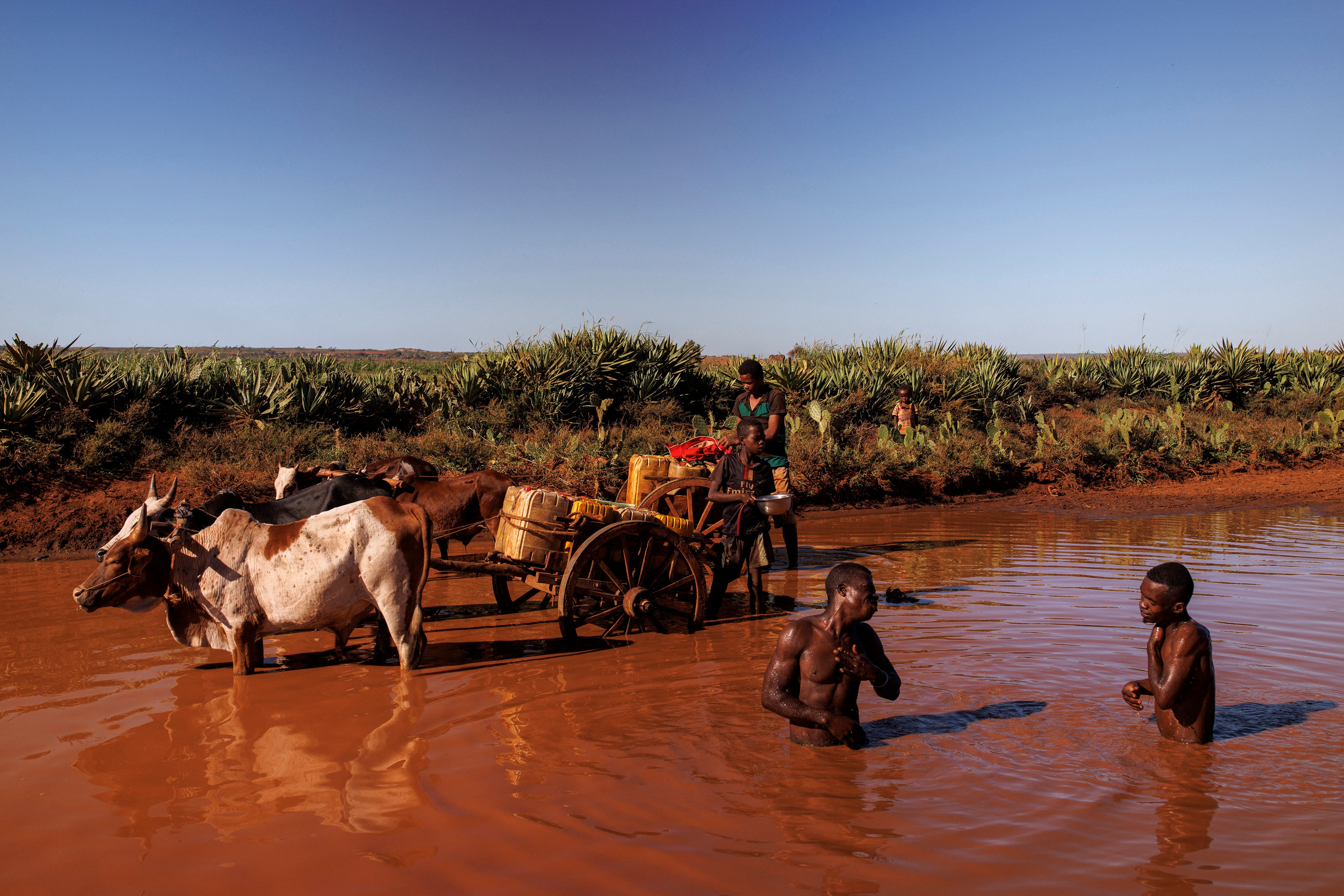A green island turns red: Madagascans struggle through long drought
Madagascar has always known extreme weather events, but scientists say these are likely to increase in frequency and severity as the climate crisis pushes temperatures higher

Your support helps us to tell the story
From reproductive rights to climate change to Big Tech, The Independent is on the ground when the story is developing. Whether it's investigating the financials of Elon Musk's pro-Trump PAC or producing our latest documentary, 'The A Word', which shines a light on the American women fighting for reproductive rights, we know how important it is to parse out the facts from the messaging.
At such a critical moment in US history, we need reporters on the ground. Your donation allows us to keep sending journalists to speak to both sides of the story.
The Independent is trusted by Americans across the entire political spectrum. And unlike many other quality news outlets, we choose not to lock Americans out of our reporting and analysis with paywalls. We believe quality journalism should be available to everyone, paid for by those who can afford it.
Your support makes all the difference.With precious few trees left to slow the wind in this once fertile corner of southern Madagascar, red sand is blowing everywhere: on to fields, villages and roads, and into the eyes of children waiting for food aid parcels.
Four years of drought, the worst in decades, along with deforestation caused by people burning or cutting down trees to make charcoal or to open up land for farming, have transformed the area into a dust bowl.
“There’s nothing to harvest. That’s why we have nothing to eat and we’re starving,” says mother-of-seven Tarira, standing at a remote World Food Programme (WFP) post where children are checked for signs of malnutrition and given food.
More than a million people in southern Madagascar currently need food handouts from the WFP, a United Nations agency.


Tarira has brought her four-year-old son Avoraza, who has been struggling to put on weight, to collect sachets of a peanut-based product known as Plumpy, used to treat malnourished children.
“There are seven, so there wasn’t enough food. The Plumpy wasn’t enough for him,” she says, holding Avoraza by his thin arm.
Like many others in the region, Tarira and her family have sometimes been reduced to eating a type of cactus known locally as raketa, which grows wild but provides little nutritional value and gives stomach pains, she says.


The world’s fourth largest island and one of its most diverse ecosystems, with thousands of endemic species of plants and animals such as lemurs, Madagascar projects the image of a lush natural paradise. But in parts of it, such as its far southern regions, the reality on the ground has changed.
“We used to call Madagascar the green island, but sadly now it is more of a red island,” says Soja Lahimaro Tsimandilatse, governor of the southern Androy region.
Praying for rain
The food crisis in the south built up over a period of years and has interconnected causes including drought, deforestation, environmental damage, poverty, Covid-19 and population growth, according to local authorities and aid organisations.
With a population of 30 million, Madagascar has always known extreme weather events, but scientists say these are likely to increase in frequency and severity the human-induced climate crisis pushes temperatures higher.


The United Nations’ IPCC climate change panel says increased aridity is already being observed in Madagascar, and forecasts that droughts will increase. At the height of the food crisis in the south, the WFP warned the island was at risk of seeing “the world’s first climate change famine”.
A study by international research collective World Weather Attribution says that models indicate a small shift toward more droughts caused by climate change in southern Madagascar, but that natural variability is the main cause for the second one-in-135-year dry event since 1992.
Theodore Mbainaissem, who runs WFP operations in the worst-hit areas in southern Madagascar, says once-regular weather patterns have changed beyond recognition in recent years and elders in the villages can no longer figure out the best time to plant or harvest.
Mbainaissem says that after months of intervention by the WFP, other aid organisations and the local authorities, the worst of the food crisis is over. He says rates of severe malnutrition among children have dropped from about 30% a few months ago to about 5% now.


“When you look in the villages, you see children running left and right. That wasn’t the case before,” he says.
Communities and aid groups are already trying to move past the emergency phase and focus on forward-looking projects, such as a large-scale effort in the coastal town of Faux Cap to stabilise sand dunes by planting.
But in rural areas where people live in dire poverty, some of the trends that contributed to the crisis are still present.

For recently married Felix Fitiavantsoa, who is burning down a wooded area to start cultivating it, the long-term consequences of deforestation are a secondary concern.
His urgent need is to grow food to feed his young wife, and his main worry is whether it will finally rain so he can get started.
“If there’s no rain, I don’t know what we’ll do. We’ll pray to God,” he says.
Join our commenting forum
Join thought-provoking conversations, follow other Independent readers and see their replies
Comments